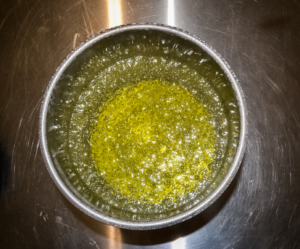Various types of crude cannabis extract can be successfully distilled into high purity cannabinoid distillate. With that in mind, it’s critical that the crude always be properly prepared prior to a vacuum distillation process. Depending on the type of extract being distilled, this can include one or more post-extraction steps, such as:
- Rough particulate filtration
- Removes the bulk of plant material from a cannabinoid/solvent solution, typically used for ethanol-extracted solutions. Generally employs filter media (paper, cloth, filter discs) in the 10-25 micron range.
- Winterization/De-waxing
- Removes waxes and lipids that were co-extracted with cannabinoids. Uses sub-freezing temperatures to and coagulate the waxes/lipids, making them easy to remove with filtration.
- Liquid-liquid separation
- Removes chlorophylls, proteins and other compounds that can cause odor and burning issues during the distillation process. This process requires the use of solvents and must always be practiced in a safe manner.
- Sub-micron filtration
- Removes proteins, carbon residuals, and any other remaining non-solubilized contaminants that may be invisible to the naked eye. Failure to remove these compounds from a boiling flask prior to fractional distillation can cause undesirable results, including low THC potency.

Cannabis distillation equipment, including Spinning Band, is excellent at producing high purity THC/CBD distillate from crude cannabinoid extract. However, because not all compounds that are collected during an extraction process can be separated from each other using a simple distillation process, proper post-extraction / pre-distillation processing is a critical step to achieve high purity and repeatable results.
Comments are closed, but trackbacks and pingbacks are open.